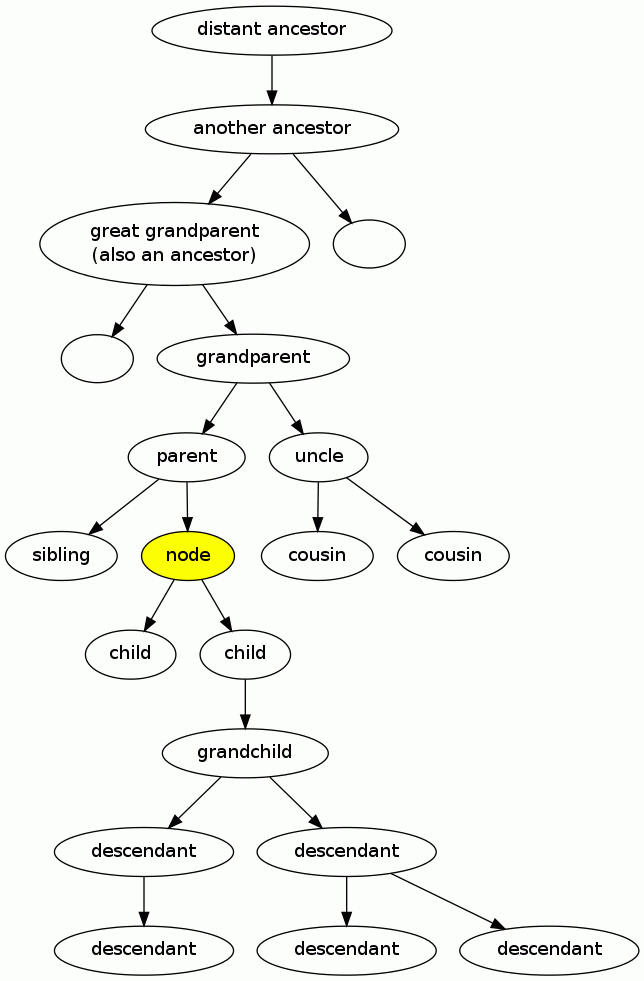
Our story so far: finding stuff by value is such a useful operation that we give it various names, including dictionaries, symbol table, lookup table, associative array, map, set, relational database, and hash. We can implement a dictionary abstraction using a linked list, but this give O(N) asymptotic performance for lookup—relatively expensive unless N is pretty small or we're doing a small number of lookups. We can use binary search in an array but this is inflexible. We can exploit the basic idea of binary search to build a data structure called a Binary Search Tree (BST).
As with Binary search, search tree algorithms require that the stored data has an ordering predicate which we can call "less-than" without loss of generality.
A BST works well (O(log N) lookup) as long as the input while building the tree arrives in random order (average case). The tree can degenerate into a linked list for large classes of systematic input, including common cases such as input in sorted or reverse sorted order.
We have several algorithms that rebalance the tree via rotation operations.
The B Tree uses a different approach for balancing. We will look at the 2-3 tree as a special case.
The AVL tree is the original self-balancing data structure, discovered/invented in 1962 by G. M. Adelson-Velski and E. M. Landis. Insert/Lookup/Delete are O(log N) for best, worst, and average cases.
We won't go into detail about the AVL, because we'll focus on the red-black tree. We just note the basic idea and the essential difference between AVL and red-black.
The basic idea is that each node keeps track of difference in height between the two subtrees. On insert or delete, rotations are performed to maintain a difference of no more that 1, keeping the tree roughly balanced. The lookup operation is unmodified.
Since the tree is balanced, insert/delete is O(log N). To rebalance after an insert, we perform up to O(log N) rotations, so the net asymptotic complexity remains O(log N).
Also see the wikipedia article.
A red-black tree is a Binary Search Tree in which each node is labeled by a color, red or black (it could be called up/down, true/false, 0/1, but red/black was chosen). The tree has the following rules (invariants) that must be maintained:
Implication:
A parent pointer is not required, but makes coding so very much easier.
Trying to hand-label some arbitrary binary tree is hard and confusing
Considering only insertion; deletion is similar.
Insert a new entry in the tree in the location where it would normally be inserted (ignoring the synthetic black leaves). Label the new node red. It will have two black (synthetic) children. Rebalance the tree to make sure the red-black conditions (invariants) are maintained.
In keeping with the geneology theme, the parent node of a parent
node is a grandparent and the sibling of a parent node is an
uncle.

Case-by-case analysis:
Only a few minutes left, just time enough for a quick preview of the 2-3 tree.
visit(node->left)
process(node->k1)
visit(node->middle)
process(node->k2);
visit(node->right)
Inserting a key occurs at a leaf node. If the leaf node only has one key, the new key is added in position 1 (with the original key shifted from position 1 to position 2) or position 2.
If the leaf node already has two keys, the middle of the three keys is selected as a root of a three-node mini-tree. The rootlet is passed up to its parent.
When an interior node inserts a new key into one of it's leaf descendants, it is returned either null meaning the insert has occurred, a single-key node representing the modified subtree.
This is fairly straight-forward, but there are a lot of fiddly bits to keep track of in several cases.
More on this in the next lecture.
Deletion is similar and similarly messy. Left as an exercise for the reader.